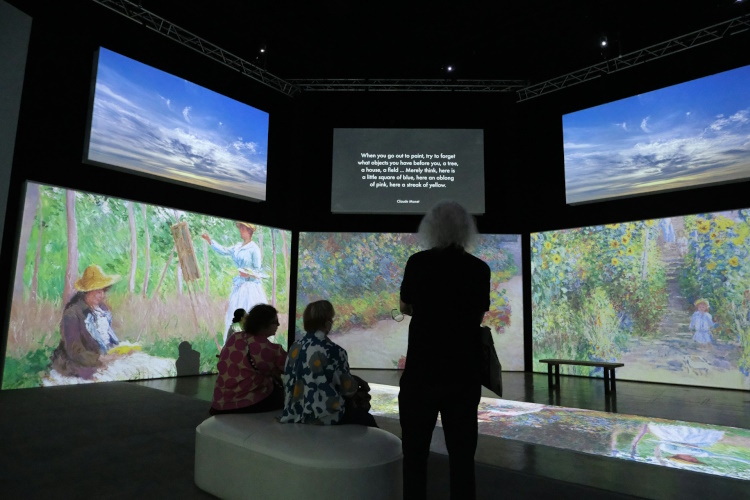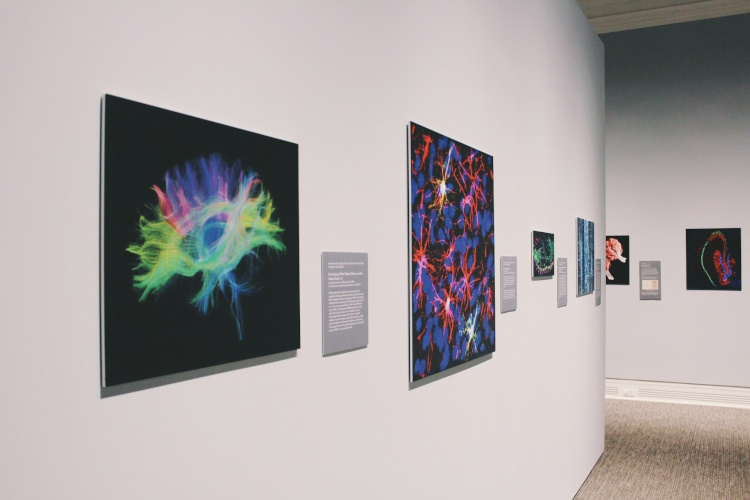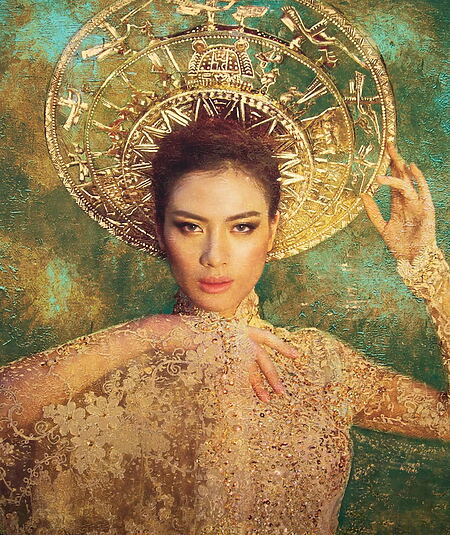Art speaks – but not always in a language everyone understands. Art has many forms of expression that can impress, provoke, or stimulate thought. Yet sometimes works remain silent, unable to address the listener by reflecting an inner world. Creativity arises from the sensitivity, intuition, and creativity of the artist. Nevertheless, an artist's world can sometimes be translated so that it evokes intensity in the viewer.
At a time when the mediation of culture becomes a rational matter, artistic, pictorial texts become more important. Exhibition descriptions, wall texts or catalogs as well as digital story formats help to make art an experience, for people as well as for experts. A ghostwriter whose ghostwriter prize can prove to be a worthwhile investment in cultural communication. They tell stories, explain the background and open doors to works that may otherwise remain closed.

Photo by Kwynett Bragado @kwynettbrgdo, via Unsplash
In this article we show how strong words make art alive - and why museums, galleries and artists are increasingly relying on professional support inside to bring their vision closer to a wide audience.
Art as a mirror of society
In today's world, works of art are no longer just silent beings in an exhibition. They intervene socially in a loud tone. Artists reflect on social topics such as environmental protection, gender equality or escape with visual language and installations or performative interventions - without words, but with clear messages. In any case, artistic means will be used to make complex, current developments tangible: photographs, sculptures, projections or performative actions.
An example: The 150th anniversary of the Museum of Design Zurich in 2025 offers a welcome occasion to honor the impressive development of this institution. What started as a musical museum in 1875 has developed into one of the most important design museums in Europe. This anniversary invites not only to look back, but also to reflect on the present and to develop future visions; Participatory forms of art a direct connection between the work of art, place and viewer.
Incidentally, the design museum is the first public building in Zurich, which was carried out according to the ideas and beliefs of the new building. A small virtual tour inside the Kunsthaus offers the following video:
Today the Museum combines historical design with contemporary currents. The close cooperation with the Zurich University of the Arts enables the integration of trend research and interdisciplinary approaches. Exhibitions such as “Helmut Schmid Typography” show this bridge function between tradition and innovation.
The museum is planning a diverse program for the anniversary year: the new permanent exhibition “Swiss Design Collection” , the pop-up exhibition “150 posters am See” and the “Design Lounge Talk” promise exciting insights into the past and future of design.
How can such an anniversary be made appropriate? Communication and public relations play a crucial role here. Digital communication strategies via social media and online platforms expand the reach. Target group analyzes help to better understand visitor needs. Participatory formats such as workshops and discussions promote the active integration of different public groups. Special initiatives such as free admission for people under the age of 20 break down barriers and increase participation.
In order to accompany this interplay in an understandable way, professional writers support art education when it comes to formulating exhibition texts, press texts and exhibition guides, in which the image sense of an aesthetically impressive work is put back in. Art is brought back into the head and not just looking at.
You can find a particularly impressive example under the term art on the Portal Cultural Education Online , where the publication of art education in the ecological crisis (2021) by Cynthia Gavranic and Maren Ziese is described how participatory projects make ecological topics experienced locally.
Innovations in art & culture
Art and culture change, for example, by expanding traditional exhibition formats to cover a wider range of interests. A contemporary understanding of culture usually aims to come with the help of interaction and inclusion from pure consideration to a holistic experience.
- Participatory projects: Integration of the spectators: Inside in the design of works to promote reflection on the environment and community.
- Urban Media Art: Places such as public places or parks become canvas - art becomes immediate part of everyday life.
- Digital mediation: QR codes, apps and virtual tours create interactive experiences.
- Performative culture : theater, dance or sound installations complement exhibitions with emotional levels.
- Community Events: Art walks, workshops and dialogue lead to local commitment.
These strategies make art tangible and allow people to actively deal with content - far beyond passive viewing.
Art texts & Exhibition Guides
New exhibitions regularly ask questions: What did the artist had in mind when he created the work? This is exactly what the word creation professionals help to open up and convey context. Art textors and ghostwriters formulate exhibition guides so that visitors come through the exhibition and understand what it is actually about. They explain the motifs, techniques and relationships in tight, meaningful texts.
Ideally, communication experts are included in the curation and planning process of an exhibition early on. For example, a guide could then inform which technology the artist uses, why he chose certain colors or shapes and try to embed the work in a social context.
With the help of compact essays, precise image legends and emotionally invited opening speeches, you make every exhibition a journey of discovery and give visitors gaining knowledge and emotional participation in the works of art. The inspection becomes enrichment and not for development.

Photo by Alina Grubnyak @alinnnaaaa, via unsplash
Ghostwriter in the art and cultural industry- bridges to the public
With the mediation between the artist and the audience, the work of ghostwriters aims to create art through language. In close cooperation with galleries and museums, they ensure that texts are not mere sources of information, but can cause emotions themselves. Beyond the writing workshop and elaborate literature, individual descriptions come about based on interviews with artists: inside and research.
Accordingly, it is of course a clearly understandable and meaningful language for everyone, which is interested in non -consecrated. One gains the impression that the writer gives the artist: without hearing in interior, without someone getting information in pure form - a way of texting that manages to find topics that are related to art in any way, a manifestation that in turn makes them up to date.
Creative forms of mediation
Artists: Today, the inside rely on various creative methods to actively involve your audience:
- Interactive installations where visitors become part of the artwork - for example through sound or projections.
- Community mosaics : People together shape large-format murals-a symbol for cohesion and identity formation.
- Urban Walks : Public tours with curator: Inside or artists: Inside, visitors accompany: inside through exhibition locations in the city context.
- Workshops and performances that make art tangible - from painting campaigns to discourse forms within the exhibition.
These formats create closeness, trust and relevance - they make art work instead of just showing them.
Art & communication - a synergetic connection
Art is a dialogue that is encouraged by words. Effective speakers are the ghostwriters and art textors who contribute to not only seeing art, but also to understand and experience. Art is made understandable for everyone through understanding, by infection, by the emotional, by mediation skills.
A work of art in public space or in an exhibition, supported by the discursive arts of leadership, should become an experience that invites you to perceive, think about it. In contemporary art, these texts are not only an explanation, but the key to their social relevance.

Owner and Managing Director of Kunstplaza. Journalist, editor, and passionate blogger in the field of art, design, and creativity since 2011. Successful completion of a degree in web design as part of a university study (2008). Further development of creativity techniques through courses in free drawing, expressive painting, and theatre/acting. Profound knowledge of the art market through years of journalistic research and numerous collaborations with actors/institutions from art and culture.

















